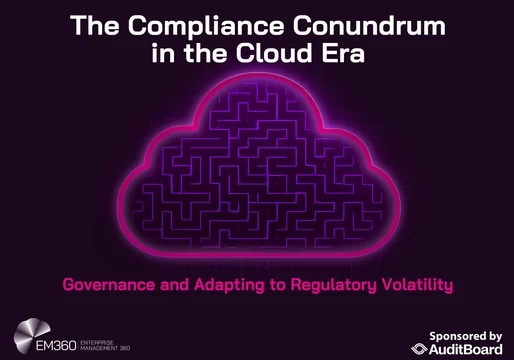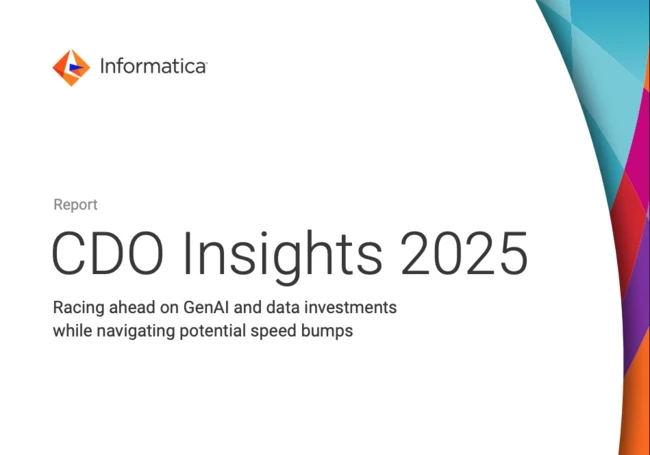Generative Artificial Intelligence (GenAI) budgets are rising, but success in production still comes down to the same foundations: trusted data, clear governance, and a delivery model that can prove value without creating risk.
CDO Insights 2025: Racing ahead on GenAI and data investments while navigating potential speed bumps gives data and analytics leaders a clear view of where programmes stall, what separates the teams that scale, and how to prioritise investment for the year ahead.
Who This Is For
Chief Data Officers, CIOs and architecture leads who need a credible path from pilot to production. CISOs and risk leaders who want responsible AI controls without slowing delivery. Finance and operations leaders who need Return on Investment (ROI) that stands up in a board pack.
Why it matters now
Boards expect GenAI to deliver measurable outcomes. Many teams have working pilots, yet a large share do not make it to stable production because the underlying data is not reliable enough, the governance is inconsistent, or the metrics for value are not agreed up front.
The cost of forcing progress is high: model drift, compliance exposure, and a loss of trust in the results. In short, scale depends on getting the data right, agreeing the rules, and showing value that is real rather than simply impressive in a demo.
What You Will Get From The Report
A pragmatic reference you can use to focus budgets and reset expectations. The analysis centres on five areas that consistently determine whether GenAI moves beyond proofs of concept:
Data readiness
The strongest predictor of scale is data reliability. The report details how teams are improving quality at the source, building automated checks into pipelines, and using lineage to make model results explainable. If data cannot be trusted, nothing else holds.
Proving value
Leaders are aligning ROI with a broader scorecard that includes productivity, customer outcomes, and risk reduction. The report offers practical ways to define Key Performance Indicators (KPIs) early, link them to delivery increments, and avoid the trap of chasing short-term cost savings at the expense of strategic value.
Governance that keeps pace
Responsible AI is now a delivery requirement, not an afterthought. You will find patterns for translating policy into controls that can be tested, monitored, and audited, including model approval steps, differential access to sensitive data, and approaches that keep compliance flowing with delivery rather than blocking it.
Skills and operating model
GenAI usefulness depends on data literacy as much as tooling. The study outlines where organisations are upskilling, which roles take ownership of model health, and how cross-functional teams prevent value leakage between build, deploy, and run.
Platform and tooling
Consolidation reduces drag. The report explores how leaders are simplifying multi-vendor estates, standardising on cloud-native data platforms, and designing for observability, cost control, and change at speed. Fewer hand-offs and clearer ownership make production safer and faster.
How To Use This Report Inside Your Organisation
Treat the findings as a set of prompts to align strategy, delivery, and sponsorship.
- Set the baseline with a short diagnostic against the five areas above. Use it to confirm what is ready, what is risky, and what must be funded before scaling further.
- Reframe success with a balanced scorecard. Pair near-term productivity wins with risk and customer measures, so progress reads as durable value rather than isolated cost cuts.
- Codify the rules by translating governance into specific checks in your pipelines and model lifecycle. Agree who owns what, and make approval steps visible and fast.
- Rationalise the stack where integration adds more friction than value. Consolidation saves time, simplifies audit, and reduces errors.
- Back the people with targeted training. The platforms will not pay off without data literacy and clear accountability for model quality.
What Sets This Study Apart
Breadth and practicality. The findings are drawn from 600 data leaders across the United States, the United Kingdom and Europe, and Asia-Pacific, which gives a credible picture of how peers are handling GenAI in real programmes.
The analysis avoids hype and focuses on decisions leaders are actually making: which controls they trust, which investments correlate with scale, and which delivery habits consistently stall progress.
Use cases the report helps you advance
If your priority is to move from a set of promising pilots to a dependable production footprint, this report gives you evidence you can take straight into planning:
- Pilot to production: define gates that focus on data reliability, monitoring, and rollback plans before expansion.
- Responsible AI: implement guardrails that are specific, testable, and transparent to the teams doing the work.
- Executive alignment: brief sponsors on realistic timelines and the value mix to expect across quarters, not just weeks.
- Platform consolidation: reduce vendor sprawl and simplify integrations to speed up delivery and lower risk.
- Operating model: set clear ownership for data, models, and outcomes so accountability survives hand-offs.
Why Download Now
The coming budget cycle will reward teams that can demonstrate trustworthy data, working governance, and a credible ROI path. This report gives you a concise, peer-tested basis for those decisions, and language that travels well between technology, risk, and finance. Use it to focus investment, reduce delivery risk, and show progress that sponsors can defend.








Comments ( 0 )